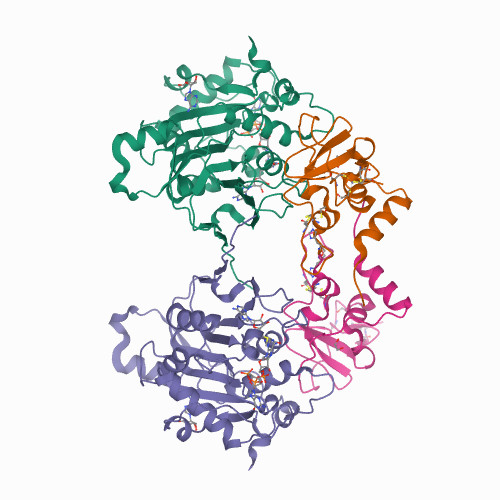Structural Basis of RNA Cap Modification by SARS-CoV-2 Coronavirus

The novel severe acute respiratory syndrome coronoavirus-2 (SARS-CoV-2), the causative agent of COVID-19 illness, has caused over 2 million infections worldwide in four months. In SARS coronaviruses, the non-structural protein 16 (nsp16) methylates the 5’-end of virally encoded mRNAs to mimic cellular mRNAs, thus protecting the virus from host innate immune restriction. We report here the high-resolution structure of a ternary complex of full-length nsp16 and nsp10 of SARS-CoV-2 in the presence of cognate RNA substrate and a methyl donor, S-adenosyl methionine. The nsp16/nsp10 heterodimer was captured in the act of 2’-O methylation of the ribose sugar of the first nucleotide of SARS-CoV-2 mRNA. We reveal large conformational changes associated with substrate binding as the enzyme transitions from a binary to a ternary state. This structure provides new mechanistic insights into the 2’-O methylation of the viral mRNA cap. We also discovered a distantly located ligand-binding site unique to SARS-CoV-2 that may serve as an alternative target site for antiviral development.
This research was performed by the lab of Yogesh Gupta at NE-CAT and is currently under review. A pre-print of the paper is available at BioRxiV.
